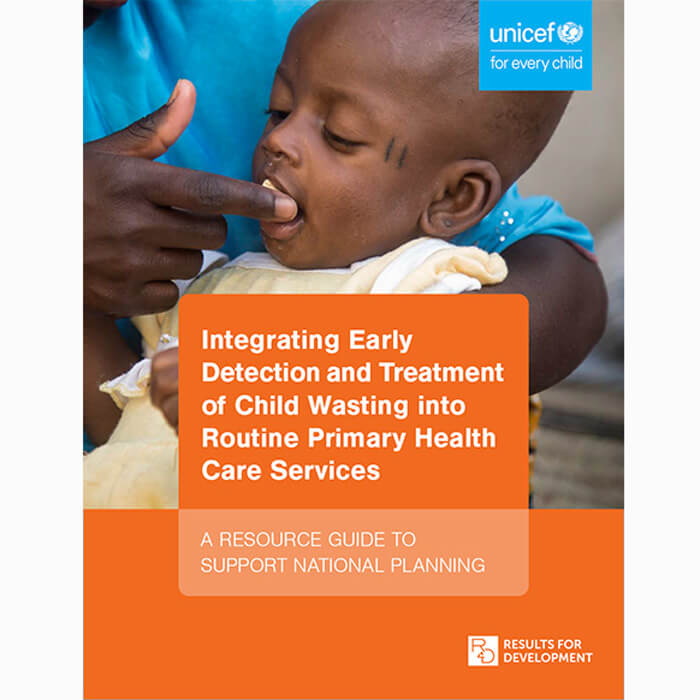WASHINGTON, D.C. — Results for Development (R4D) and UNICEF today released a new resource guide that offers an easy-to-follow, 6-step process for governments to identify ways to integrate the early detection and treatment of child wasting (low weight-for-height) within routine primary health care services.
Around the world, 45% of child deaths are linked to malnutrition, 45 million are wasted, and only 1 in 3 get treatment. Efforts to prevent and treat wasting have accelerated over the last 20 years, but wasting remains a massive public health problem in many countries, and too many children are left untreated.
Integrating vertical services such as nutrition services, into broader health programs or systems and increasing responsibility on the part of national governments can help countries achieve goals for the early detection and treatment of child wasting.
“Over the last 20 years of my work with national governments and health facilities, this guide has, for the first time, provided a one-stop, go-to resource package for nutrition integration in the health system,” said Albertha Nyaku, R4D’s nutrition program lead. “The guide can also be adapted for various country contexts, including emergency situations.”
Integrating Early Detection and Treatment of Child Wasting into Routine Primary Health Care Services: A Resource Guide to Support National Planning was developed by R4D and UNICEF through a highly consultative process with global and country actors as a practical tool to support countries in better integrating the early detection and treatment of child wasting into routine primary health care services. The target audience includes national policymakers and health and nutrition program staff who are involved in planning, financing and implementing services to support children with wasting. The guide is also useful to actors at the subnational level.
The guide’s 6-step process to develop an integration plan is a way for health sector decision-makers to prioritize integration actions that will work in their context. The approach can be adapted to include prevention, although this requires consensus on the package of preventative services and assessment of feasibility, risks, and benefits for each sector.
It is relevant for countries that have made substantial progress and countries that are just beginning the integration journey. It is also intended to be useful to countries that are looking to integrate wasting services into all components of their health system, as well as those that are focused on integration into individual components of the health system.
###
About Results for Development
Results for Development (R4D) is a leading non-profit global development partner. We collaborate with change agents — government officials, civil society leaders and social innovators — supporting them as they navigate complex change processes to achieve large-scale, equitable outcomes in health, education and nutrition. We work with country leaders to diagnose challenges, co-create, innovate and implement solutions built on evidence and diverse stakeholder input, and engage in learning to adapt, iterate and improve. We also strengthen global, regional and country ecosystems to support country leaders with expertise, evidence, and innovations. R4D helps country leaders solve their immediate challenges today, while also strengthening systems and institutions to address tomorrow’s challenges. And we share what we learn so others around the world can achieve results for development too. www.R4D.org














